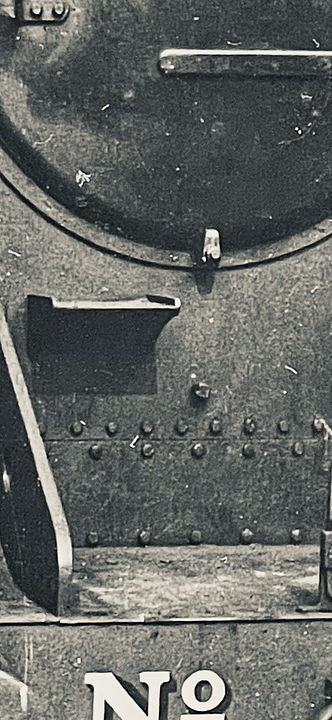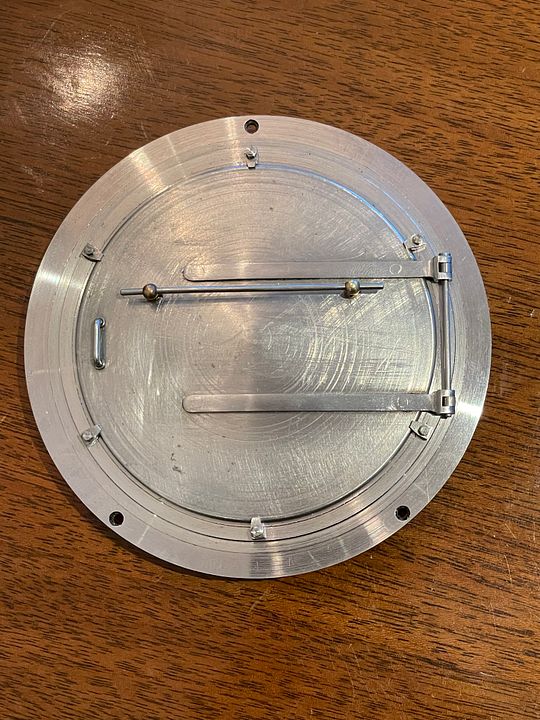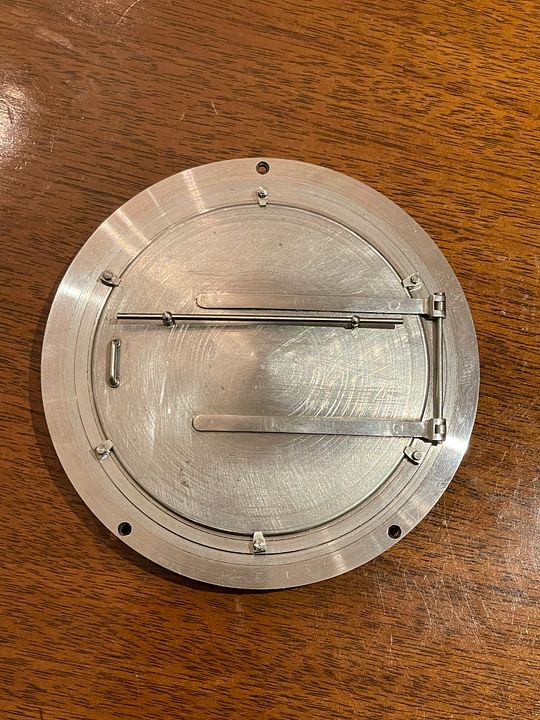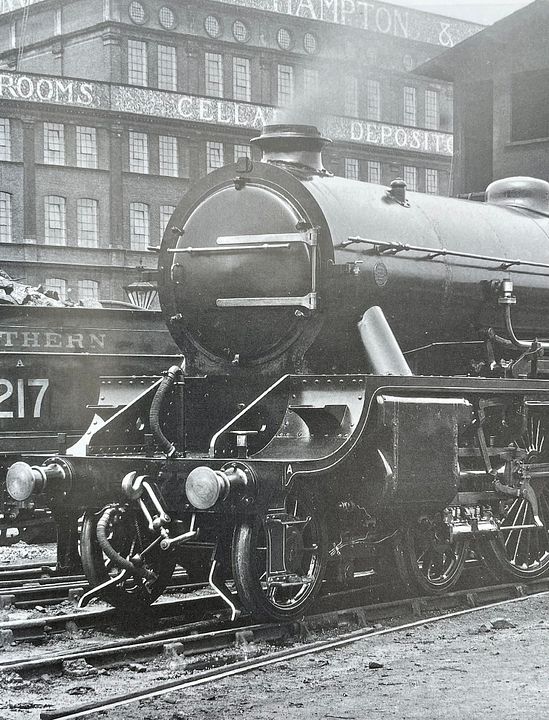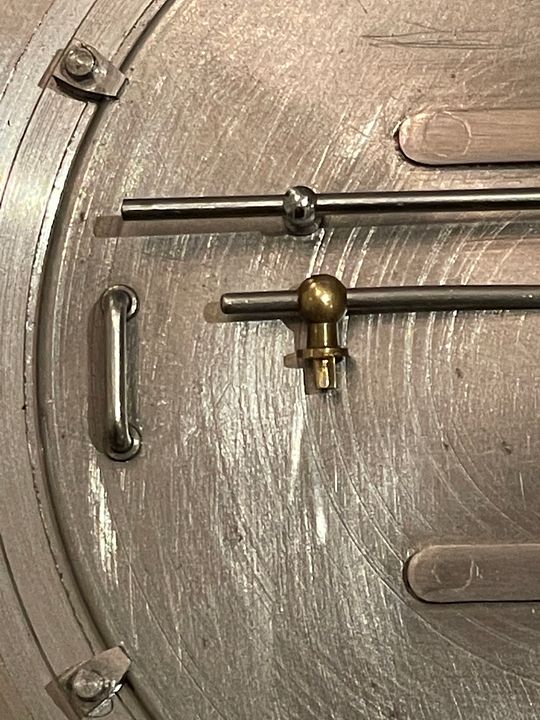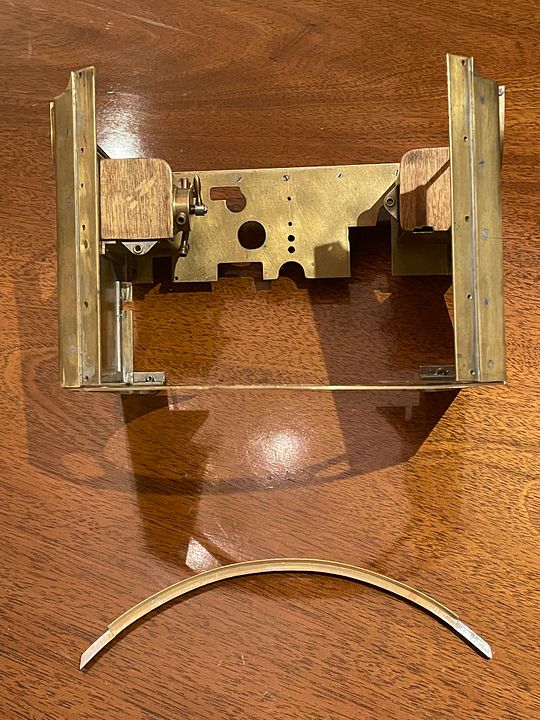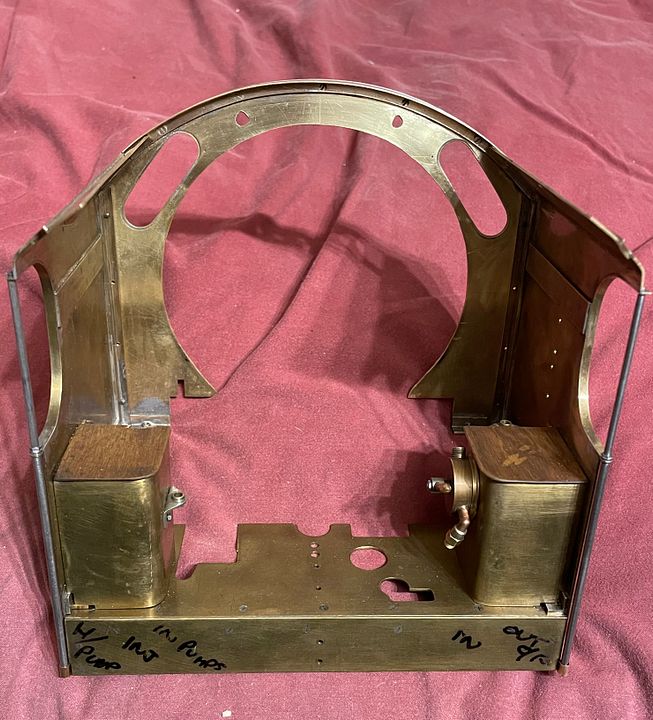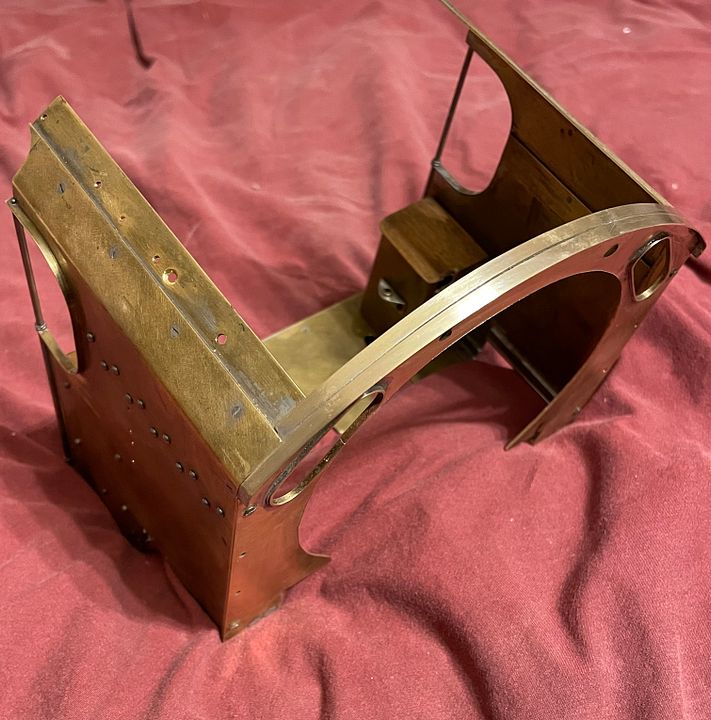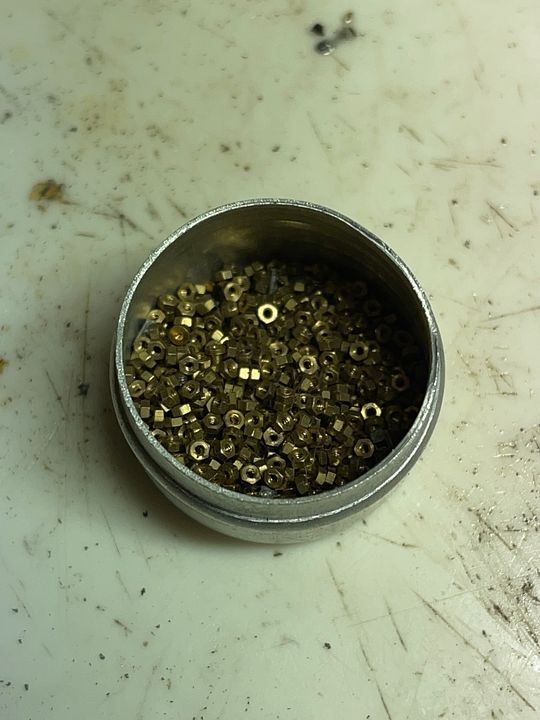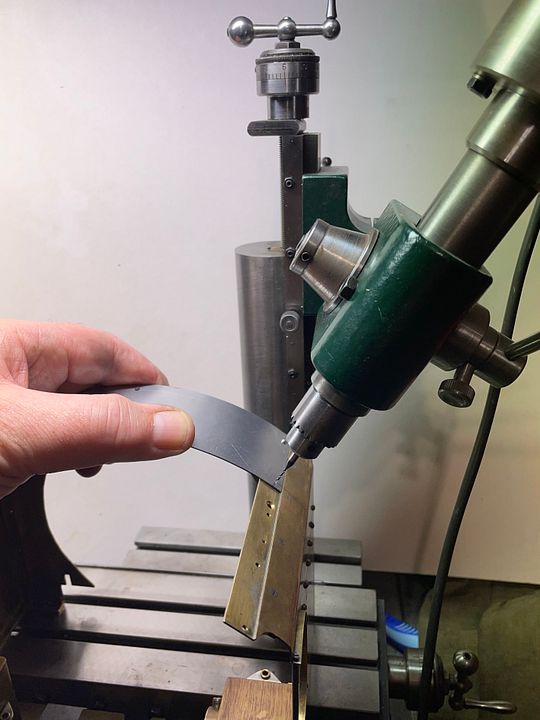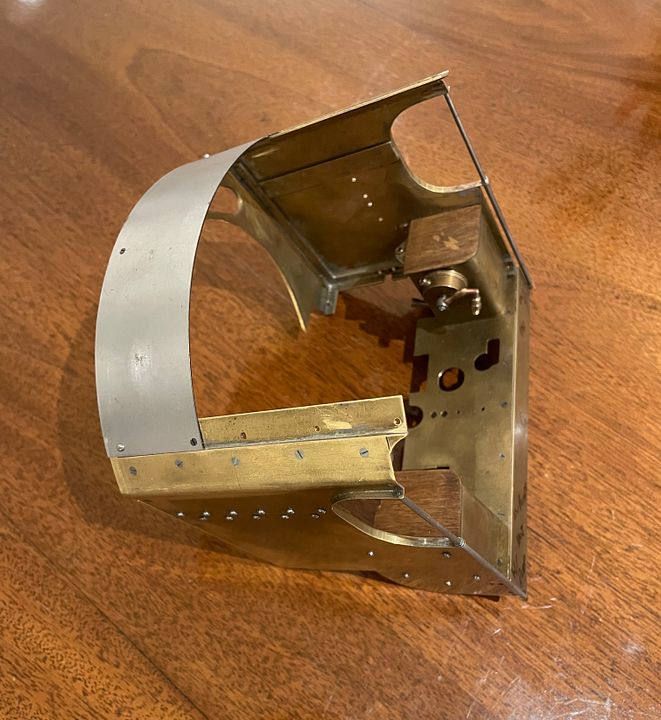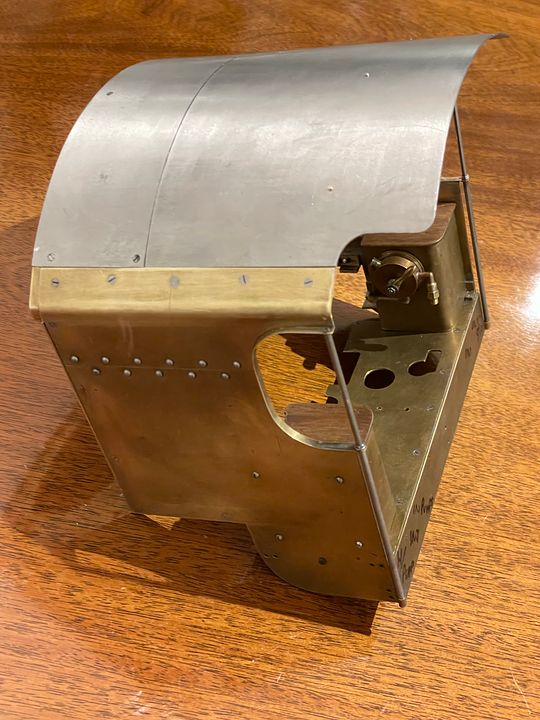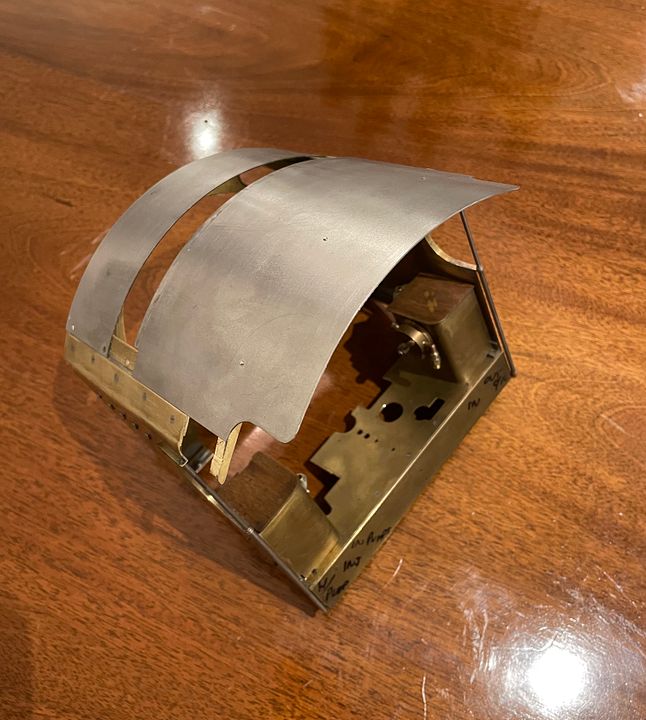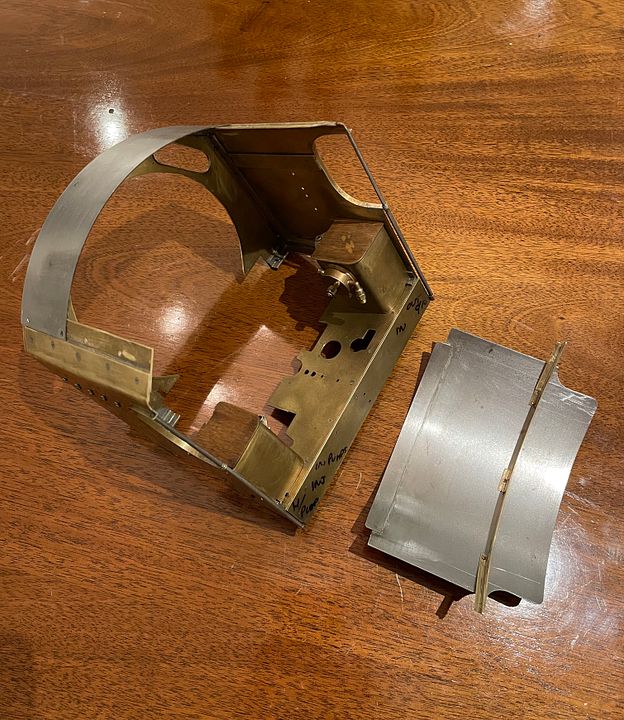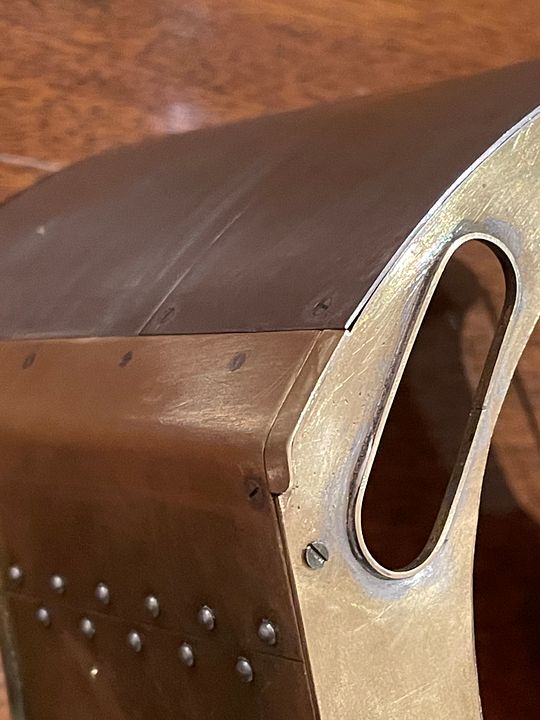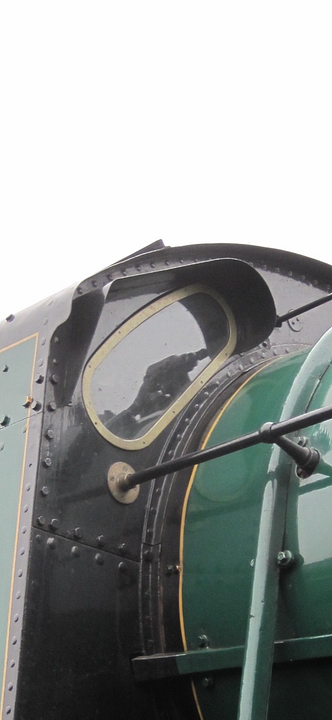The rain strips on the cab roof have now been made from 1.5mm angle brass. One of the challenges is that they have quite a sharp curve at the rear end where they change direction. After bending up the vertical curve of the cab roof between fingers and thumbs some fine slots were cut in the bottom of the strip using a very fine cut razor saw.
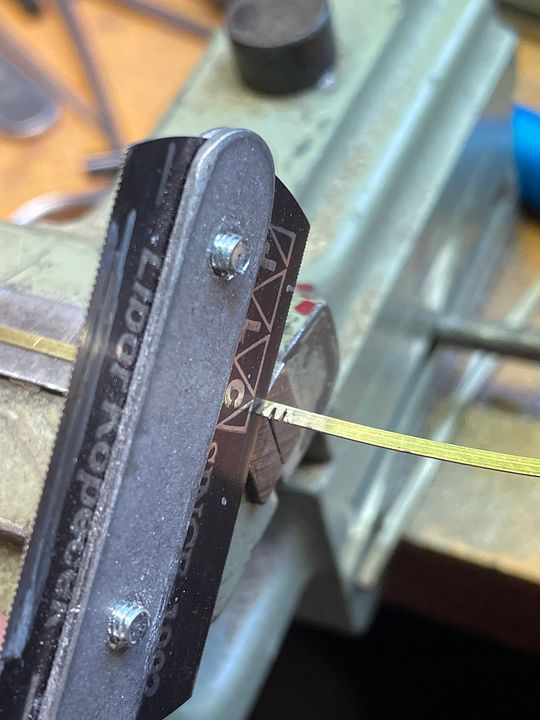
These slots were then opened out to a more triangular shape using a slotting file.
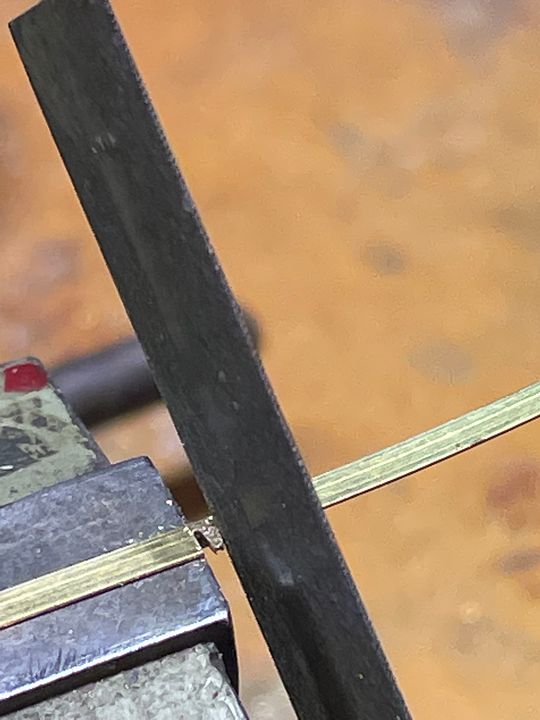
The corner was then bent up and pilot (tapping size) holes drilled in the brass angle where strategically required to keep everything in place. The underside was also tinned.
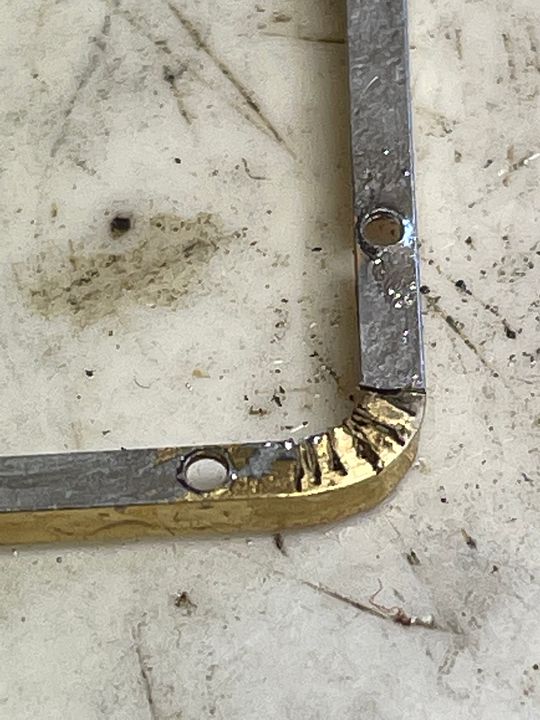
The corner was located on the cab roof and one hole drilled through the steel at clearance size through the steel roof. The brass was tapped 14BA and the rain strip located with a suitable bolt. After this stage, the second hole was drilled at tapping size and if required for alignment ‘stretched’ in the right direction using a needle file, as seen in this image:
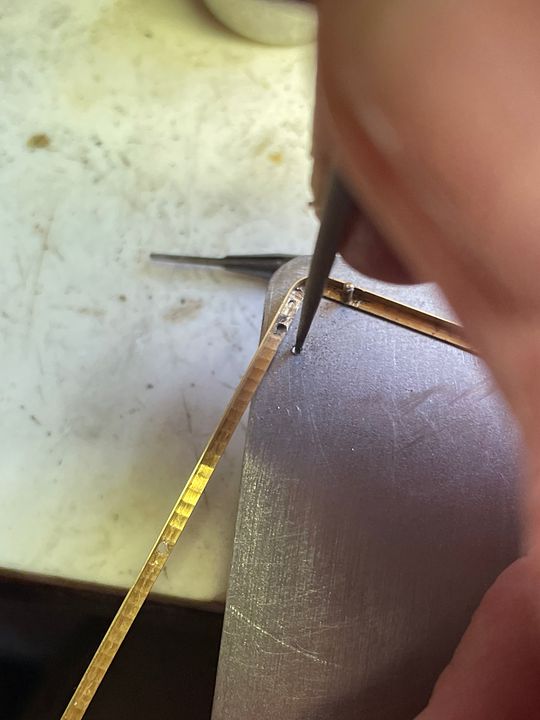
After the alignment was OK, other holes were drilled at tapping size and then tapped through the brass and steel together.

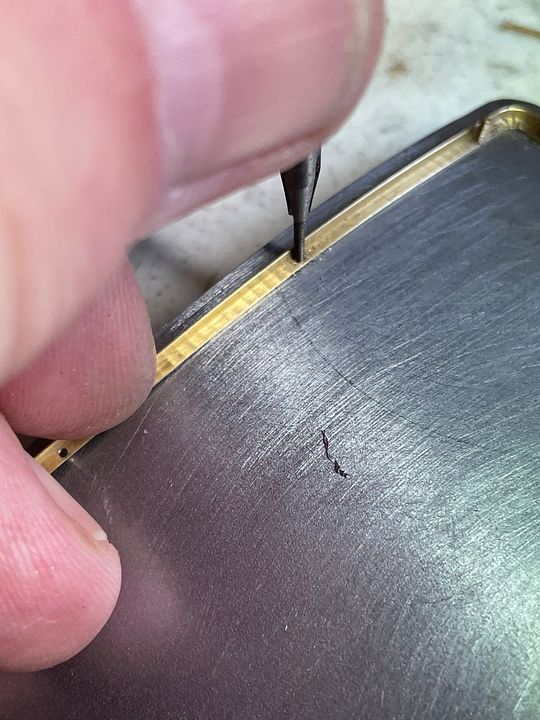
Any slight errors in alignment could be accommodated by ‘moving’ the hole in the steel roof, when it was being opened up for clearance. Once the whole lot was in place a very hot soldering iron was used to sweat everything together. With the rain strips soldered in place the bolts heads and shanks were cut off and tidied up with a riffler file. This also helped to get rid of the machining marks on the brass.
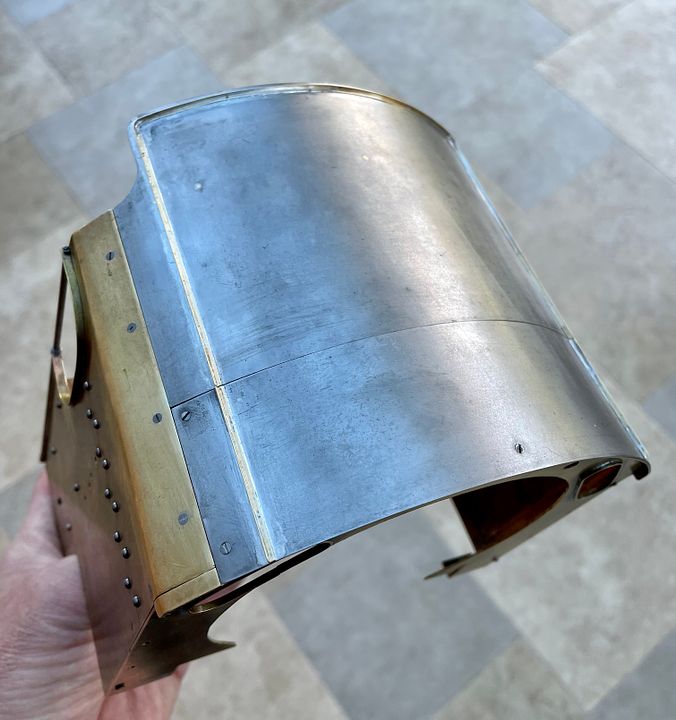
The rain strips are suitably subtle and the little tongues in the corners inconspicuous once cleaned up.
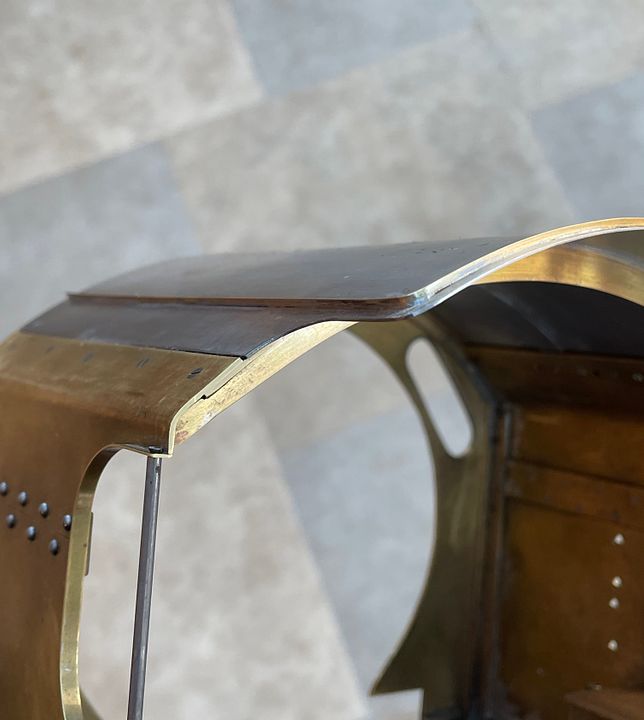
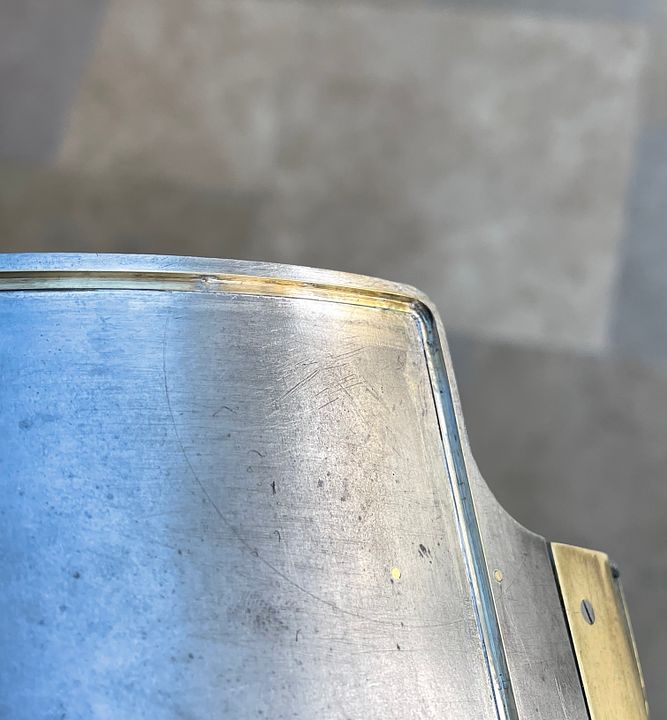
Last thing to do on the roof will be two little handles.

Tim
